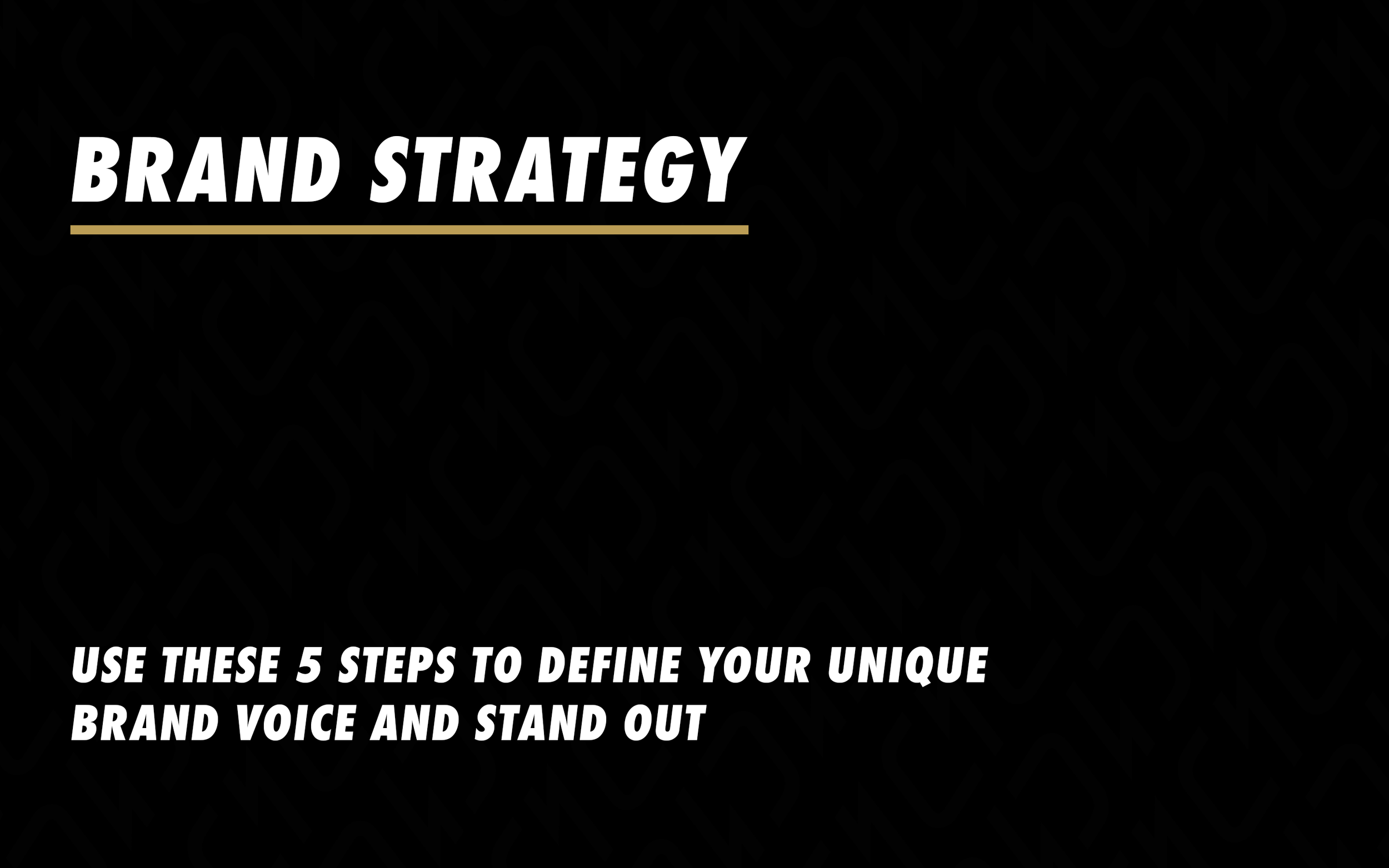USE THESE 5 STEPS TO DEFINE YOUR UNIQUE BRAND VOICE AND STAND OUT
Do you want to know the secret of selling your product or service without the “cheesy” sales tactics?
Well, I’m going to show you how - You’ll get to know your perfect customers, understand what value your product or service can bring to their lives and how to turn it all into clear, on-brand messaging you can use in your marketing campaigns to win them over and love your brand.
Credit to ‘Creative Strategy and the Business of Design’ book by Douglas Davis - for providing me with such wisdom.
1. TARGETING YOUR IDEAL CUSTOMER
Imagine your perfect customer has just walked right in front of you.
That person right there is someone who is loyally devoted to buying the awesome new product or service you launch.
Yep, feels amazing right!?
The idea is to slip deep into the shoes of, let us say, “Dave”, a 34-year-old dad of two, who wants nothing more than to come home after a hard day at work, put his feet up and chip into that cold, refreshing beer while watching Sky sports.
Dive deep into that person’s life and personality, even create a story as I did with Dave up there.
Because the more you understand who you are targeting, the easier it will be to position your next marketing campaign.
Questions to ask;
How old are they?
What’s their gender?
What hobbies do they have?
What’s their relationship status?
What’s their ethnicity?
*TOP TIP - you don’t just have to have one perfect customer, not every product or service has one demographic - create a couple if needs be.
2. HIT ‘EM WITH THE FACTS
Ok, now for something easy.
Write down a list of everything you can think of that is relevant to the brand, product or service you provide.
If your brand was founded in the 50s, write it down.
If you have multiple products or services, add each one to the list.
Does your brand have a gazillion customer service ratings? Well write it down, that’s a fact!
Literally anything and everything about your brand. The more, the better.
BUT WHY DO I NEED TO WRITE A BORING LIST??
I know, writing a list may be boring. It may feel like a waste of time.
But it makes the process a whole lot easier because you’ll have a full understanding of the pros and cons, the history and your overall position in the marketplace.
It’s also an important step for when I talk about the features and benefits in the next step.
AND…You’ll be stress-free because you won’t have to come back and do this step when you realise you need it.
3. WHAT FEATURES AND BENEFITS DO YOU BRING TO THE TABLE
So now that you’ve found out who your perfect customers are and you’re equipped with a list of facts. It’s time to add a sprinkle of pulling power!
Think of an amazing feature your product or service offers to your target audience and something that will benefit them.
Remember to think of them as one-to-one propositions - one tangible feature connected to one intangible benefit.
Bare in mind that the same feature can have multiple benefits.
Let’s look at an example - Amazons Fire TV Stick.
Feature: Amazon Prime Video Library. Benefit: Gateway to unlimited streaming.
Feature: HDMI. Benefit: Access travels with you.
Feature: The Apps. Benefit: Netflix, Amazon Video, HBO GO, and Hulu, plus games, music, and more.
*TOP TIP - Do this for all your products or services, then scan back through and isolate the most important feature/benefit combos.
4. GET THE MESSAGE RIGHT
You’re almost there, phew! (wipes away sweat from forehead)
Using all the information you gathered from the previous steps, you’re ready to write pinpoint messaging you can deliver to your target.
BUT I’M NOT A WRITER!
That’s fine, just communicate your ideas here and get a copywriter or a wordsmith on your team to polish it up afterwards.
How you will benefit;
Clear messaging that will hook your target into buying.
Ideas that form creative solutions for marketing campaigns.
Confidence in what you are offering is on brand and on message.
Aligns your brand with your ideal customers.
So, what are we saying to the target?
This is what you want your target group to understand about you and your product, brand, or service after watching the video, webisode, reading the poster, attending the event, seeing the ad, or using the app.
Remember that these are broad-based messages that the target will be able to take away from the visuals and verbal messaging you place in front of them.
Example: Nike’s running shoe using the strategy framework.
Product > Nike Running shoes
Target Audience > Weekend Athletes
Feature > Built-in extra cushioning
Benefit > Your knees won’t hurt when you go running
Message > Look great. Feel great.
Think, “what will the brand, product or service give me in exchange for what I will give them?” If you can emotionally connect your product or service with your target, they’re more likely to trust what you are selling.

